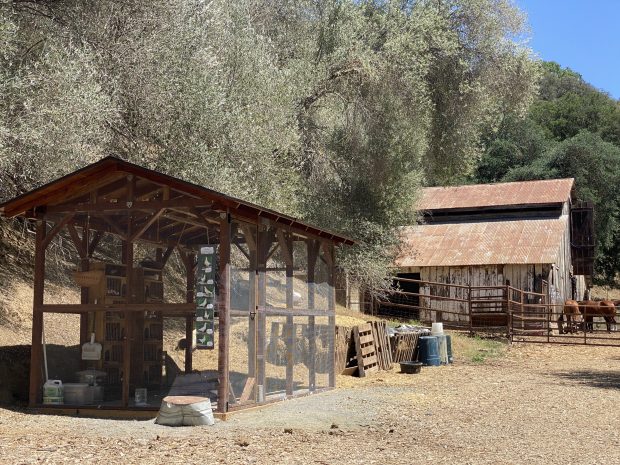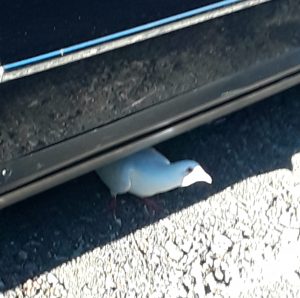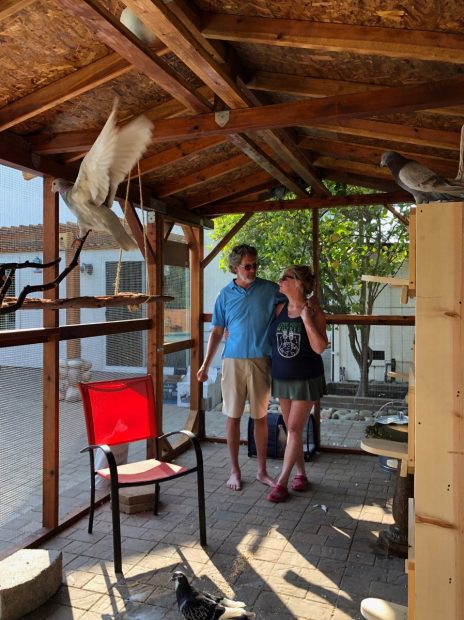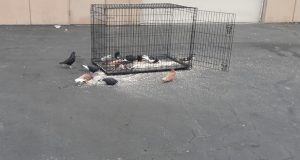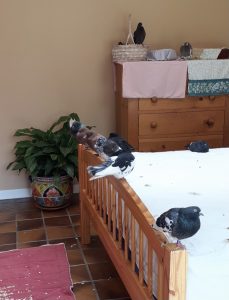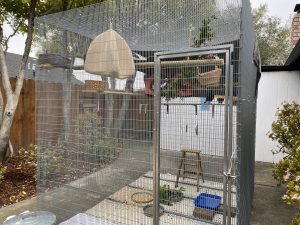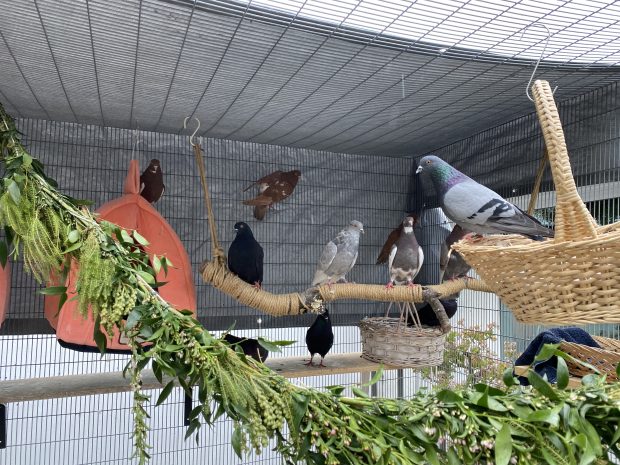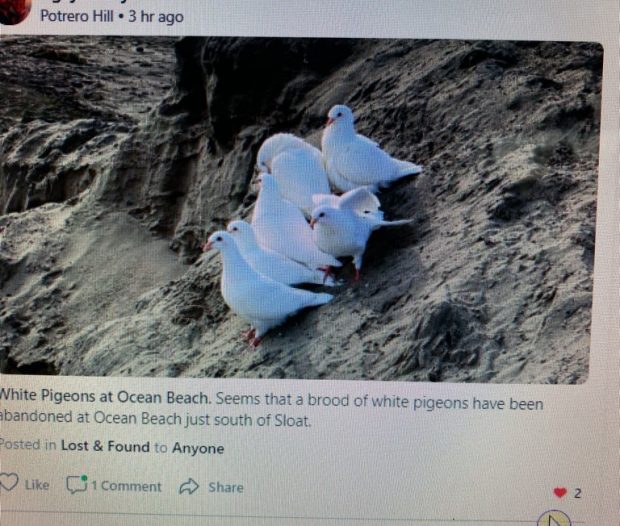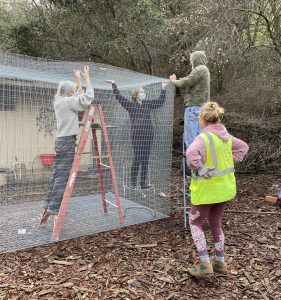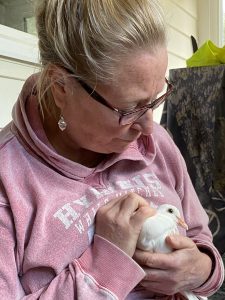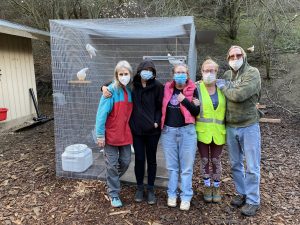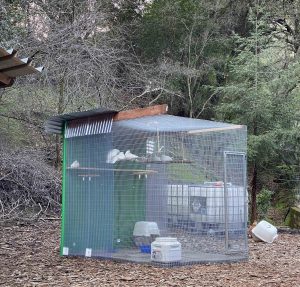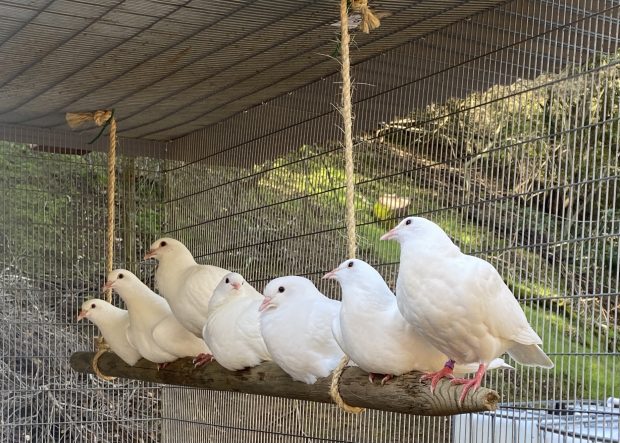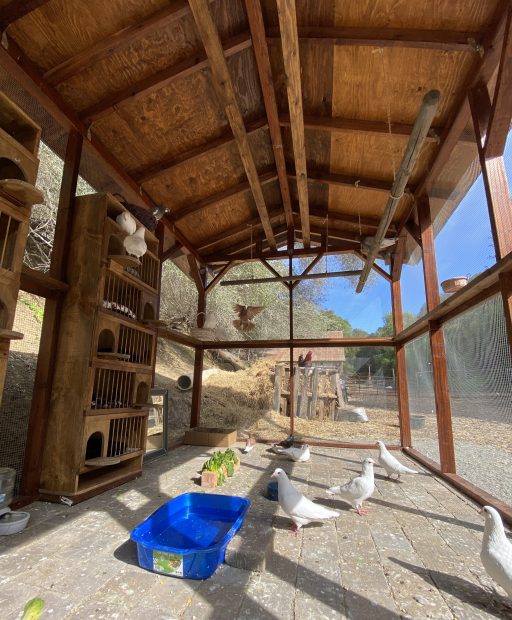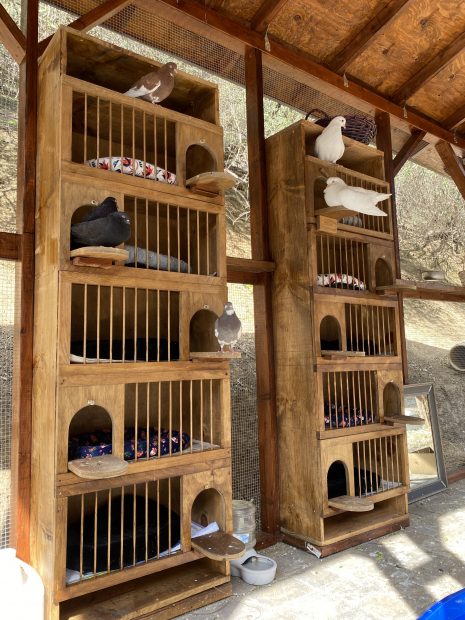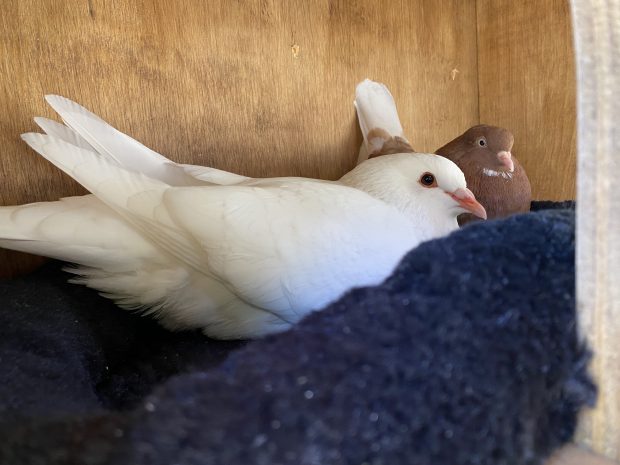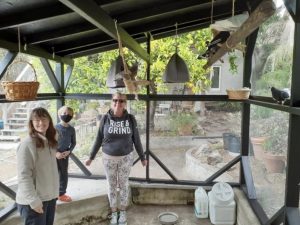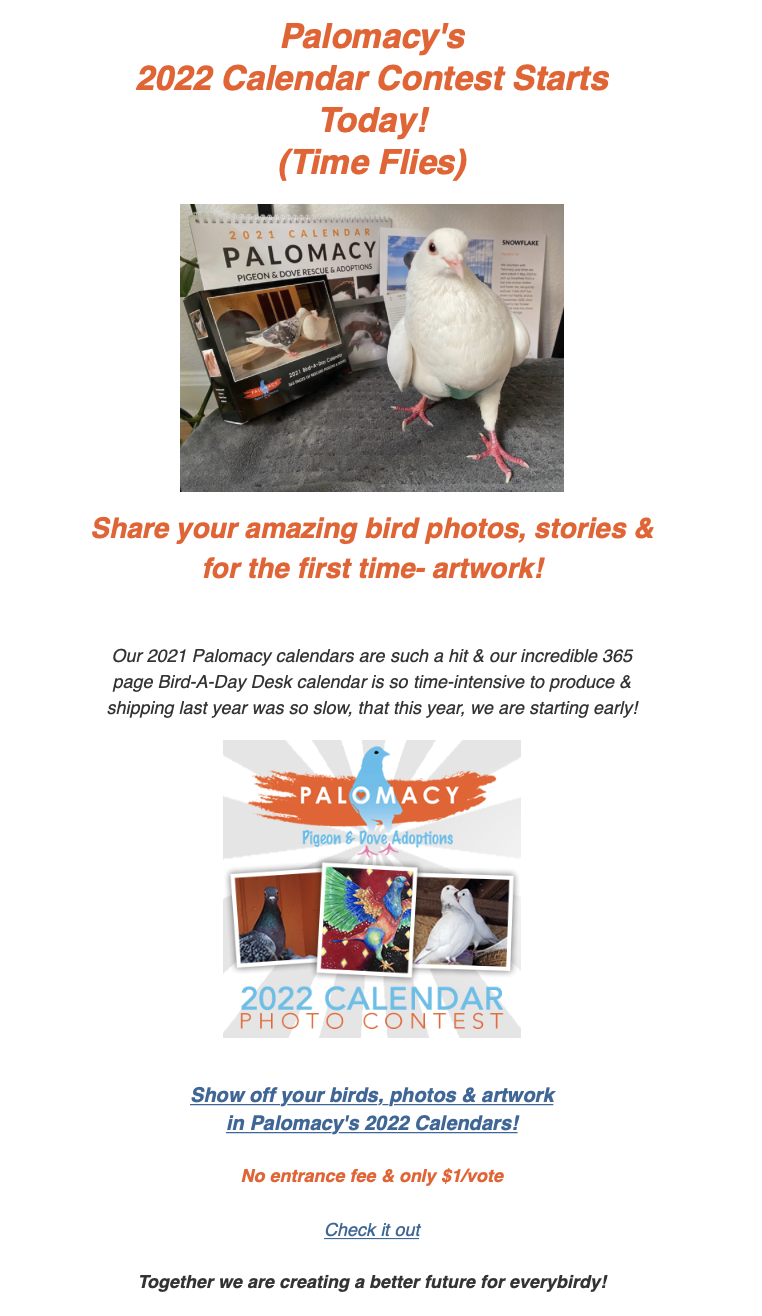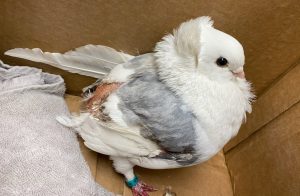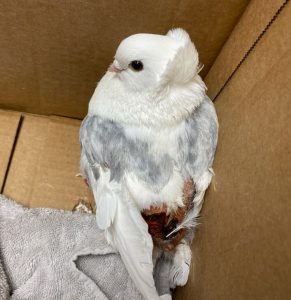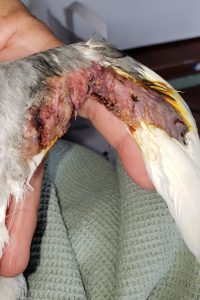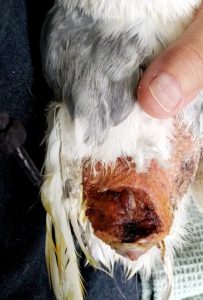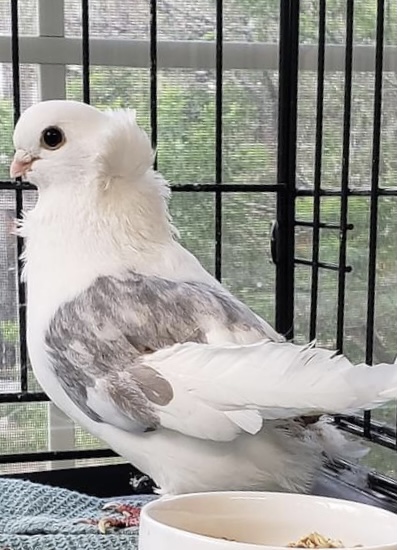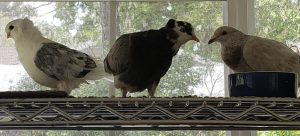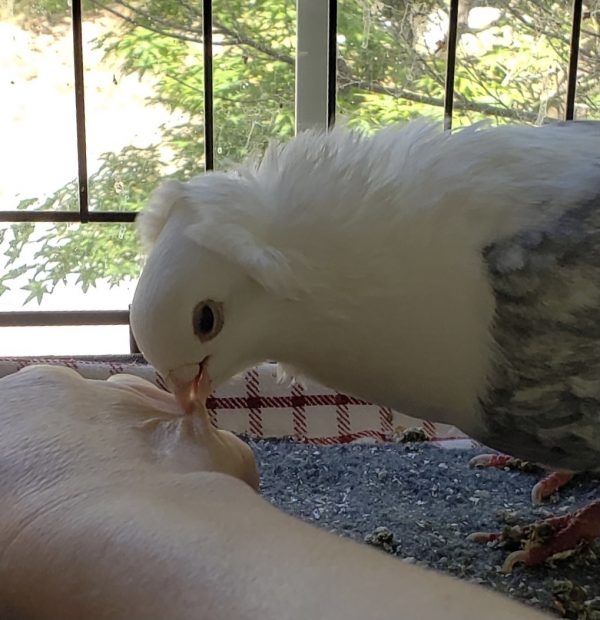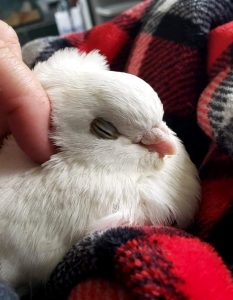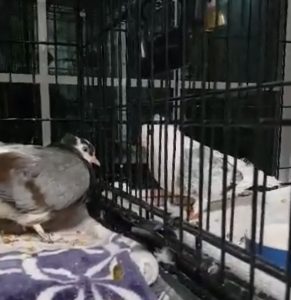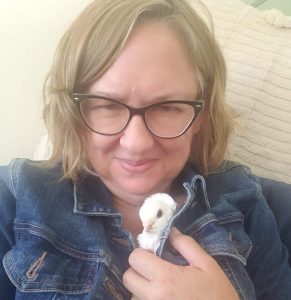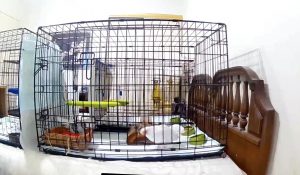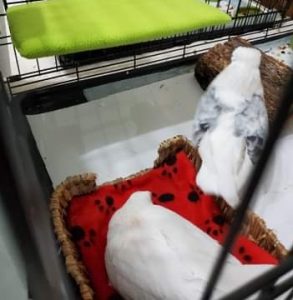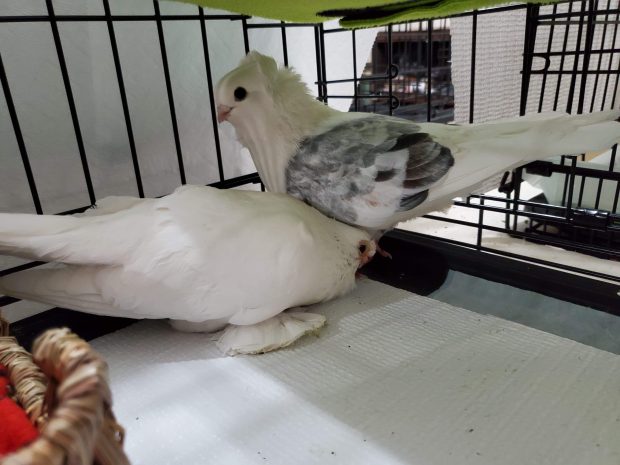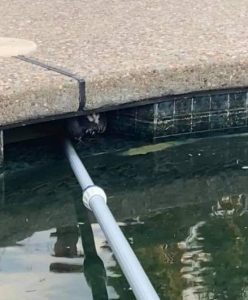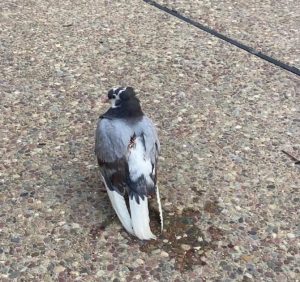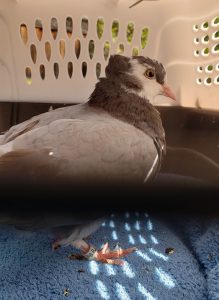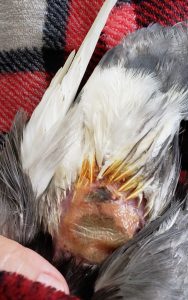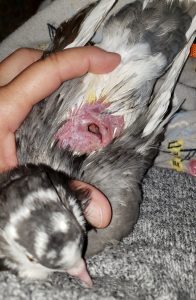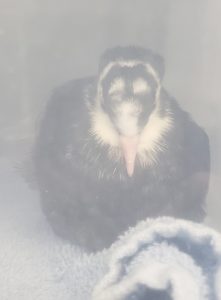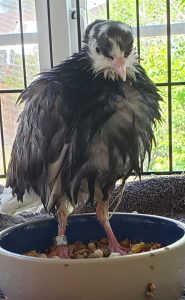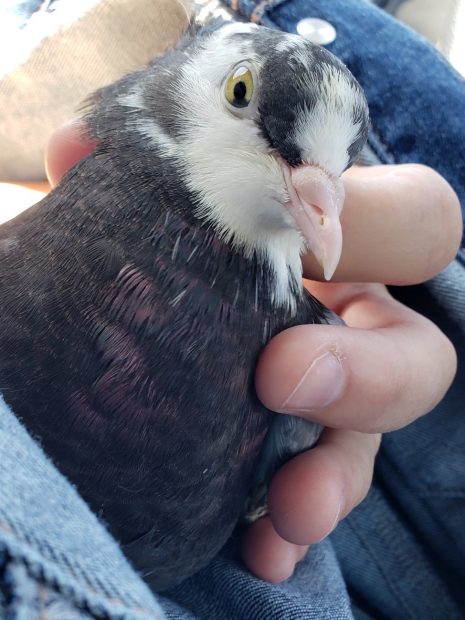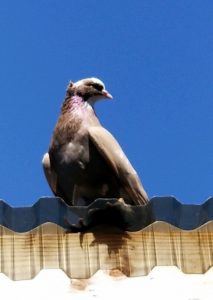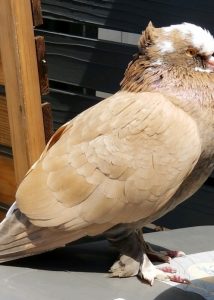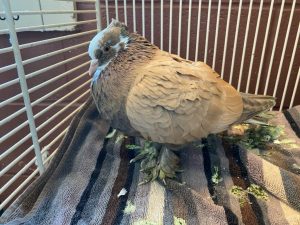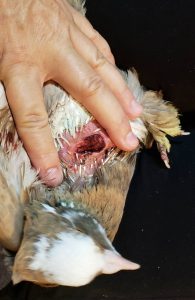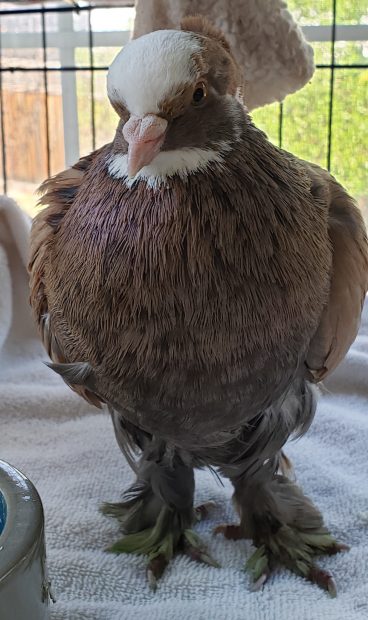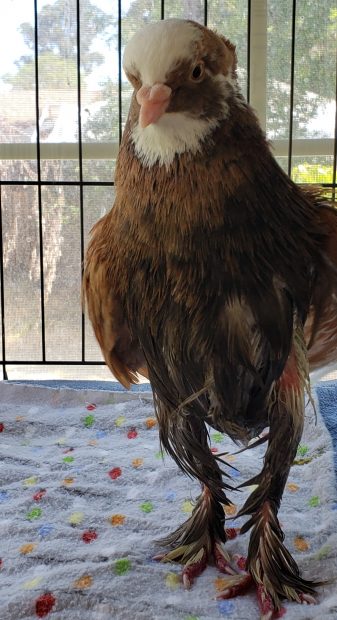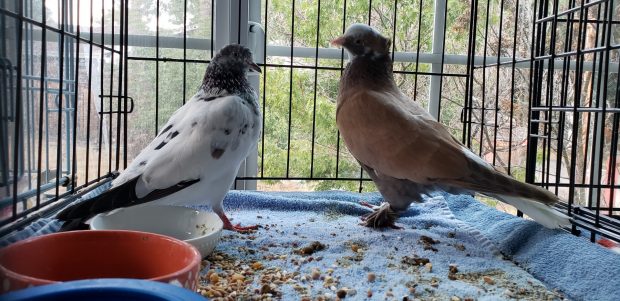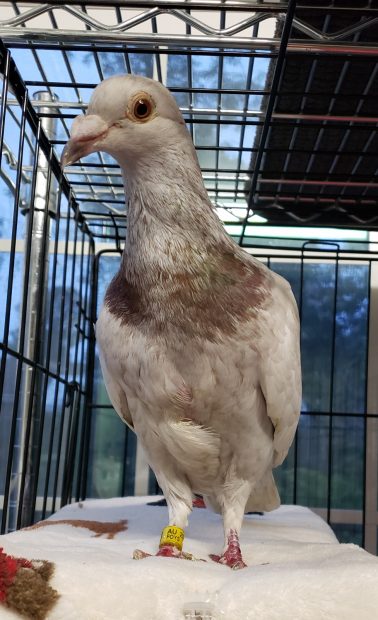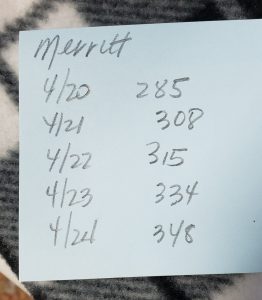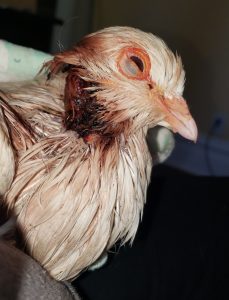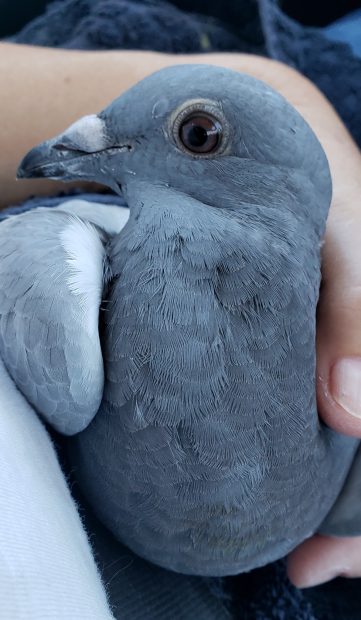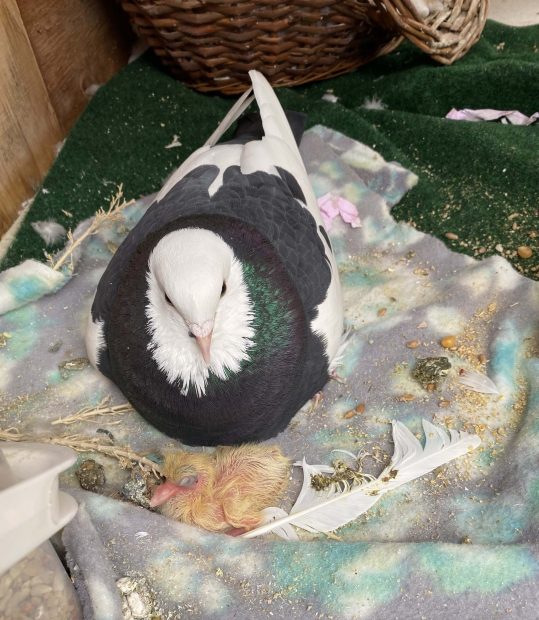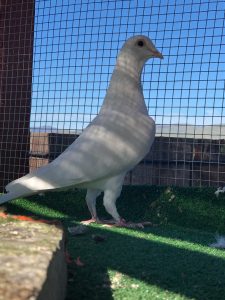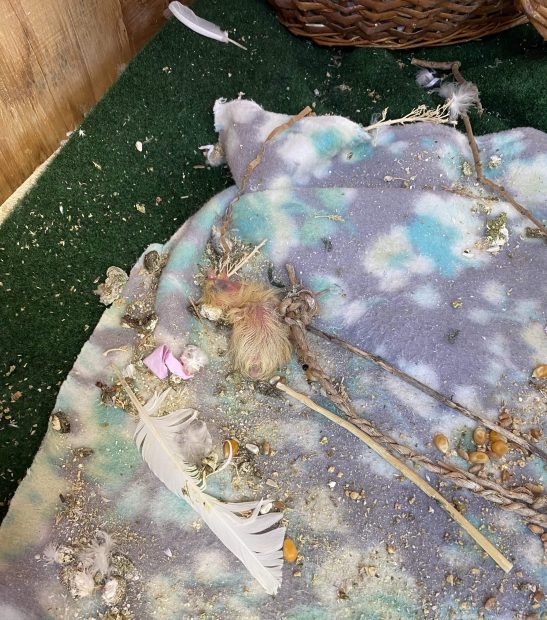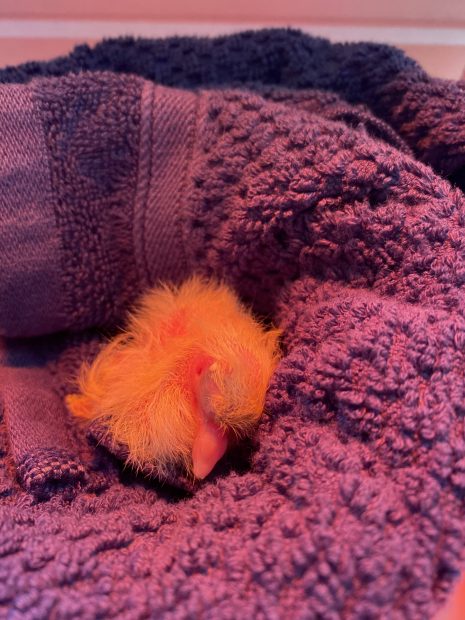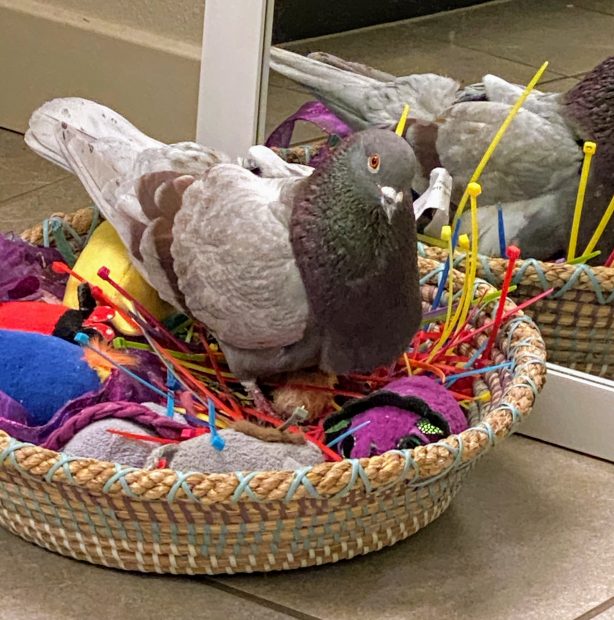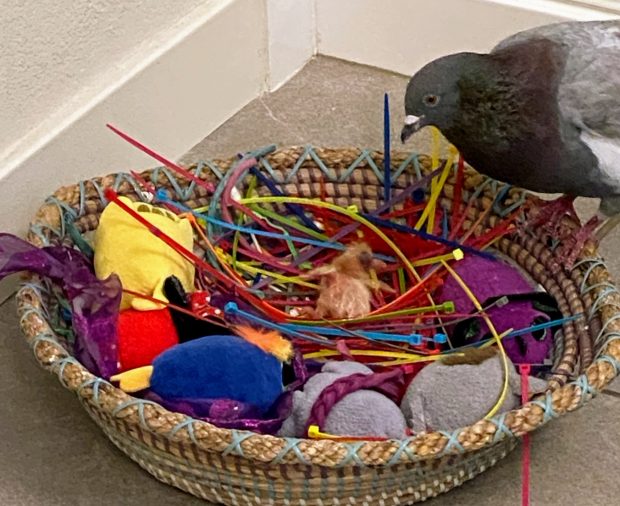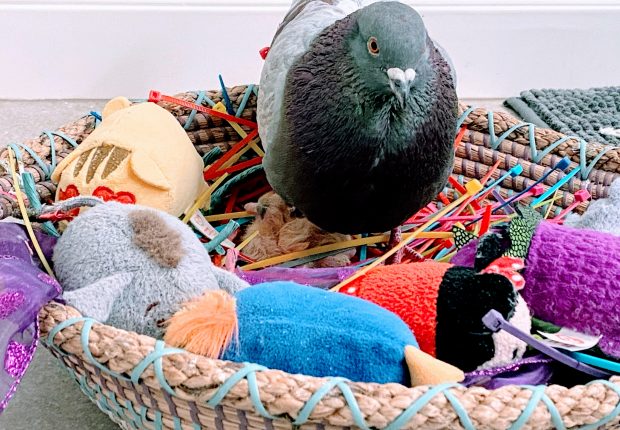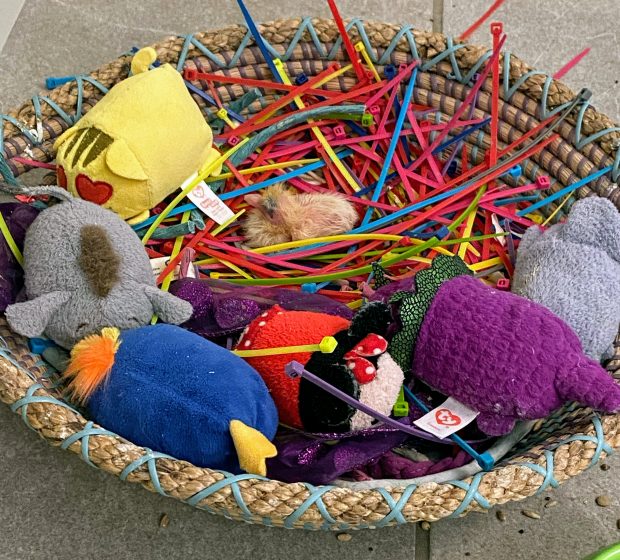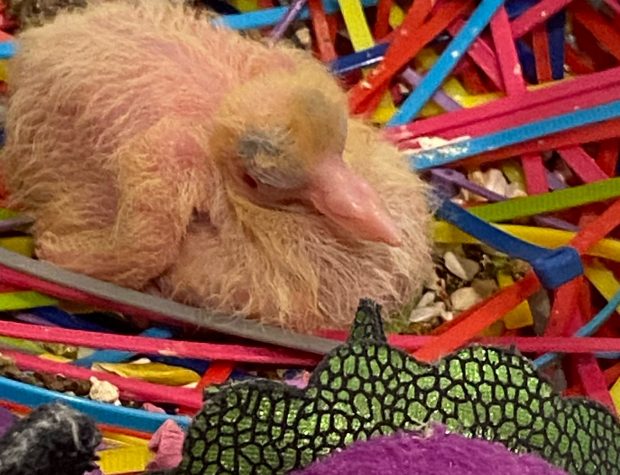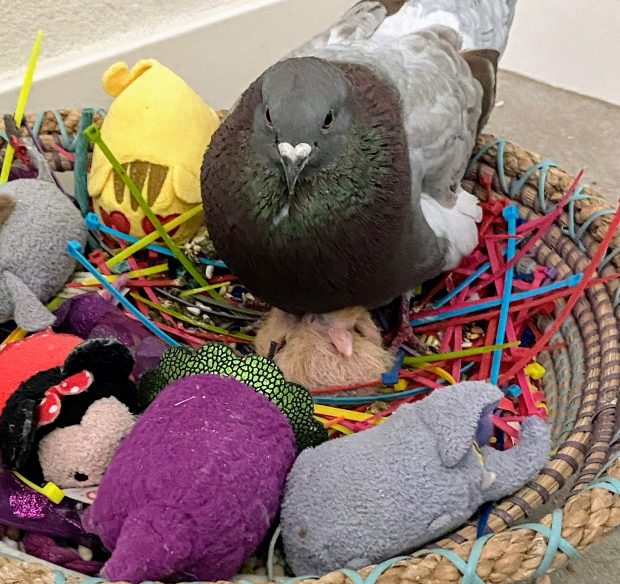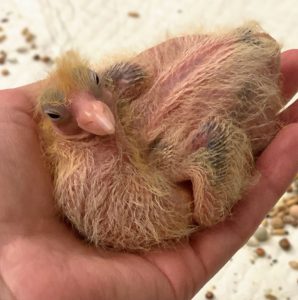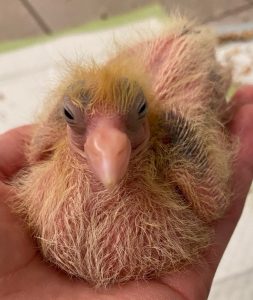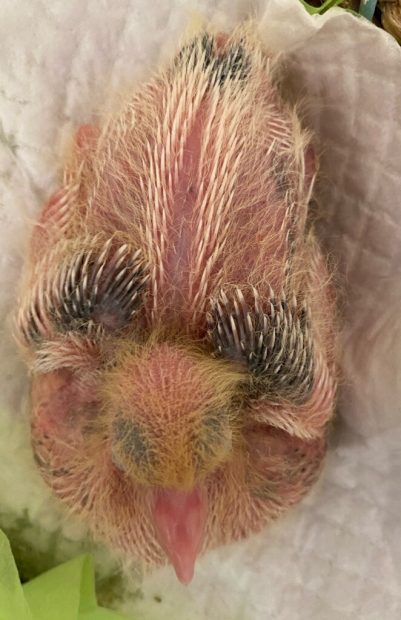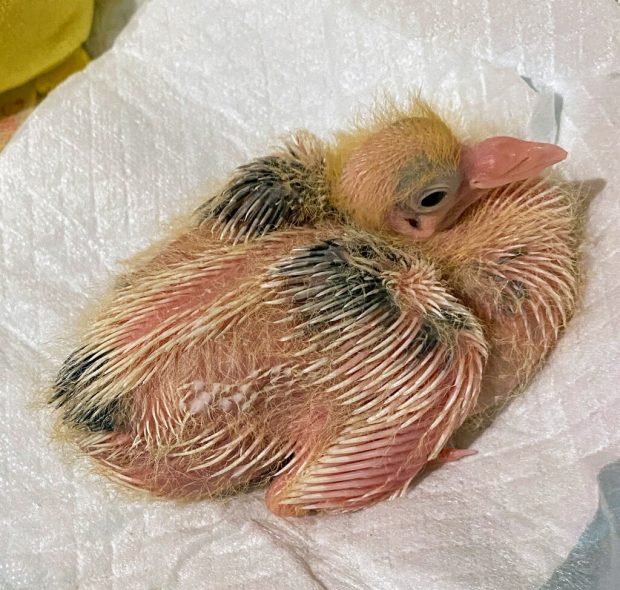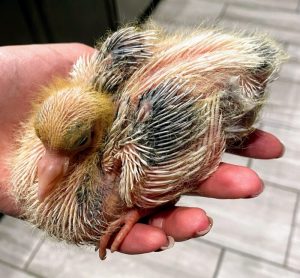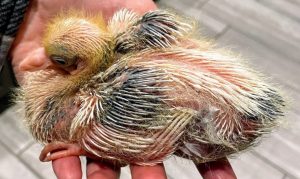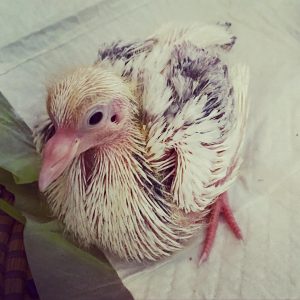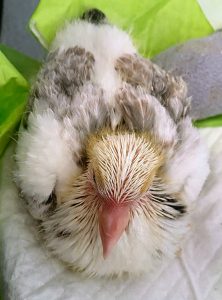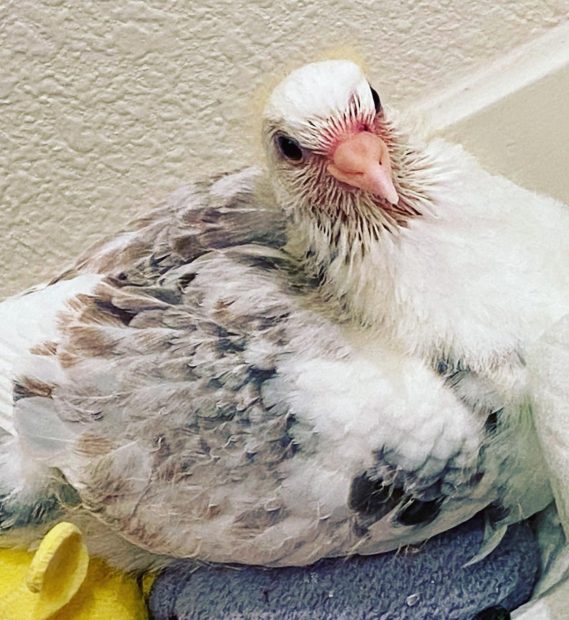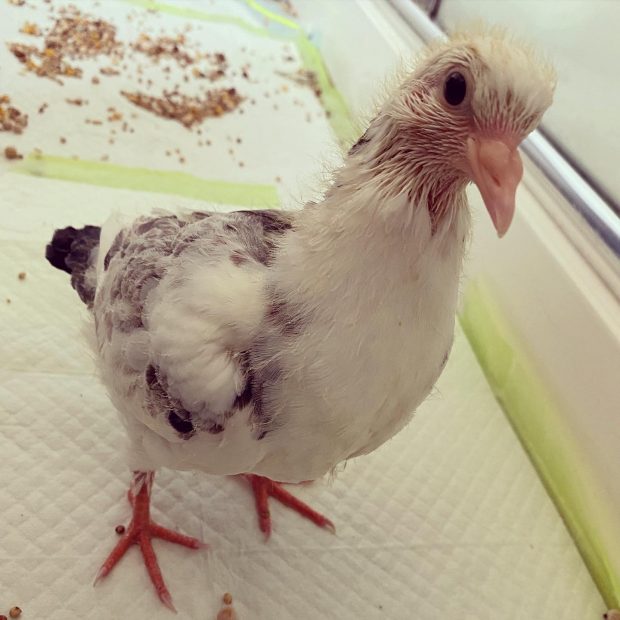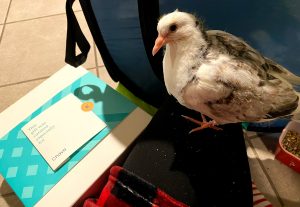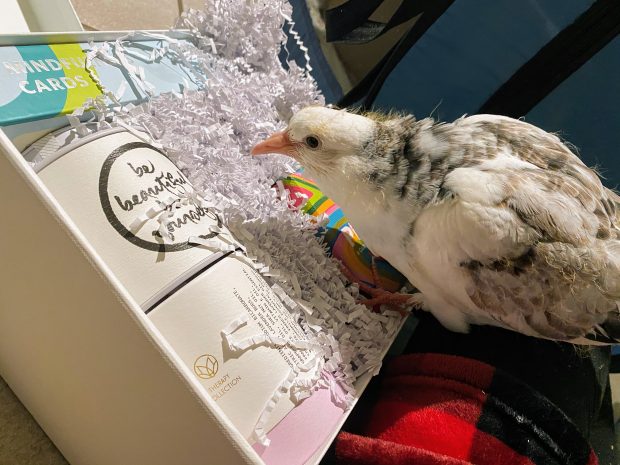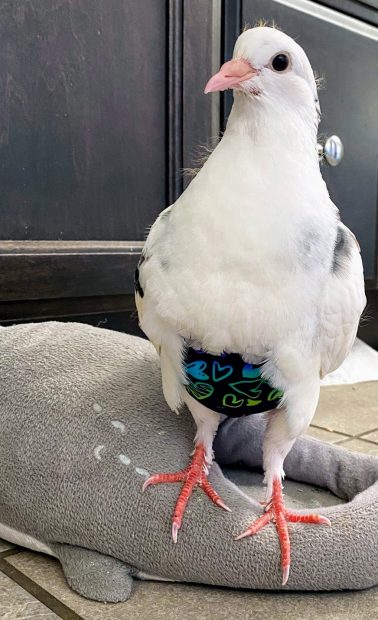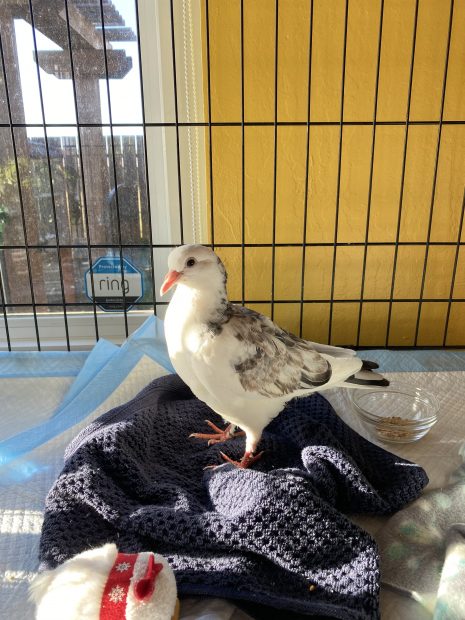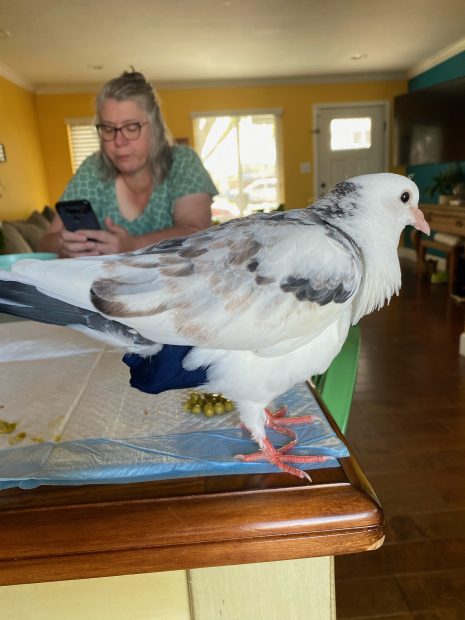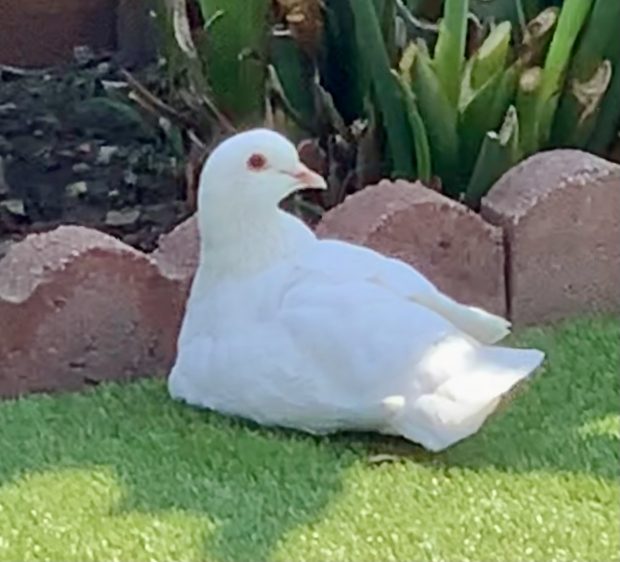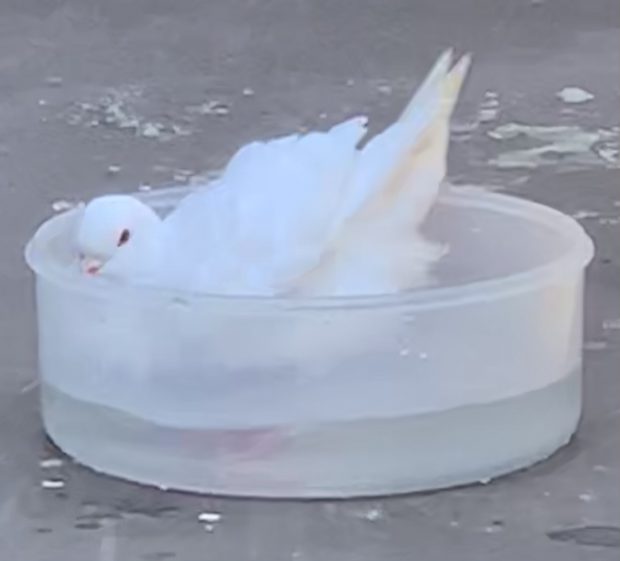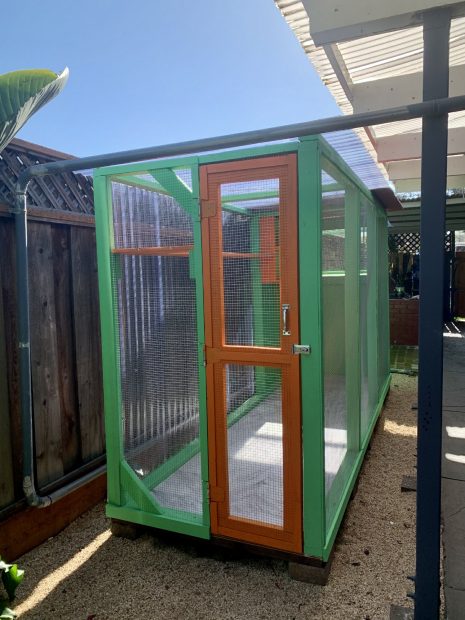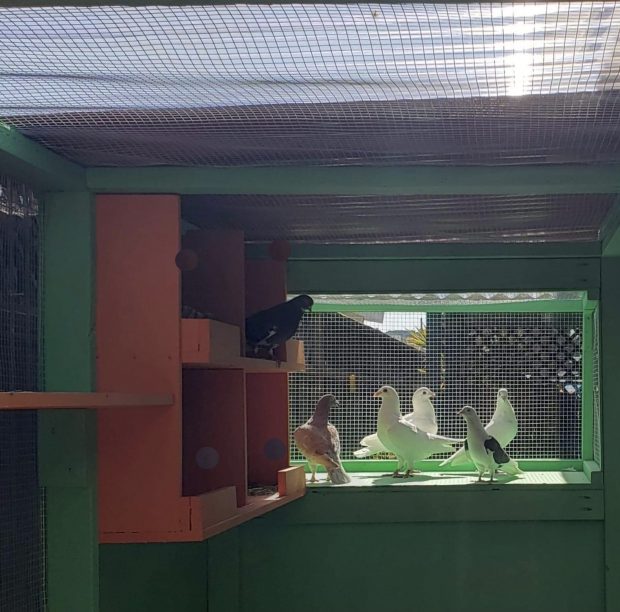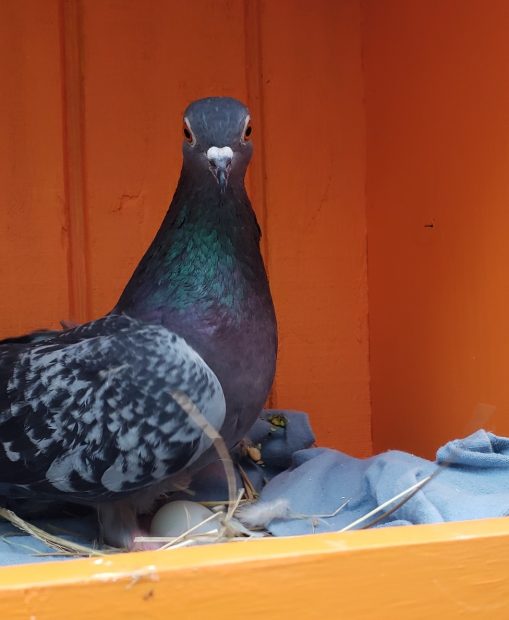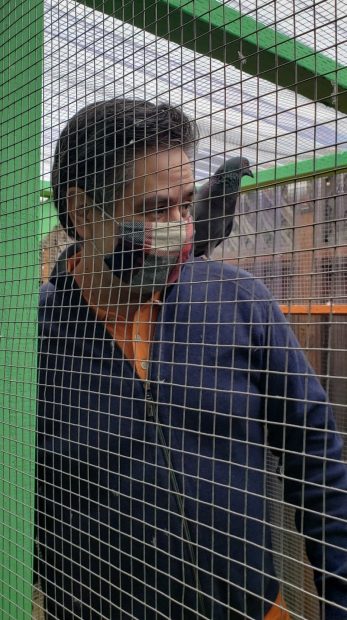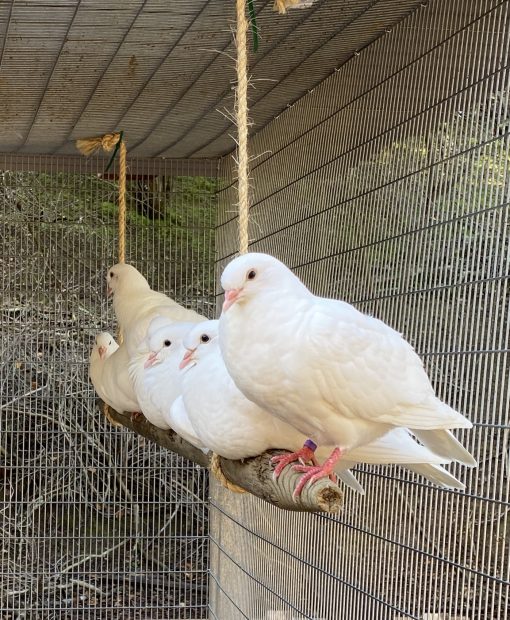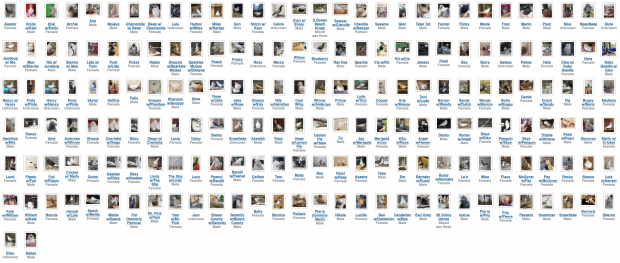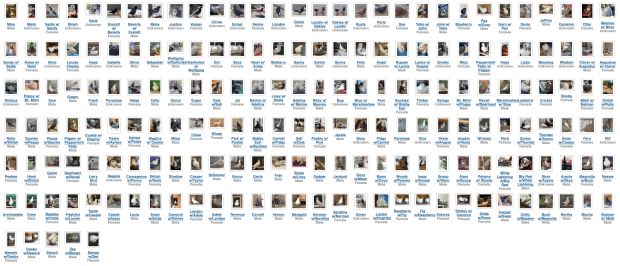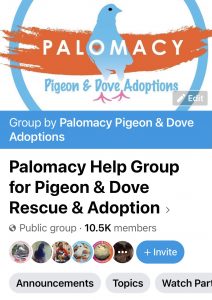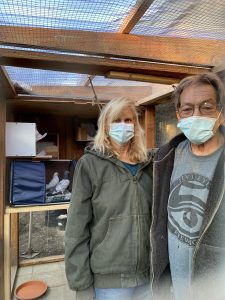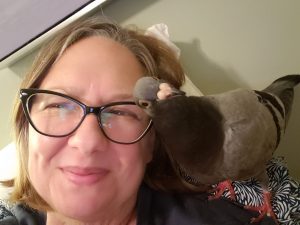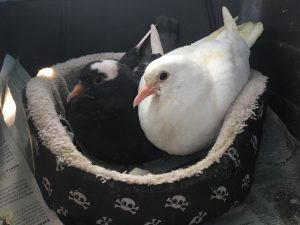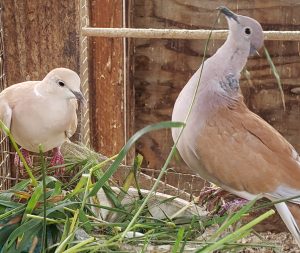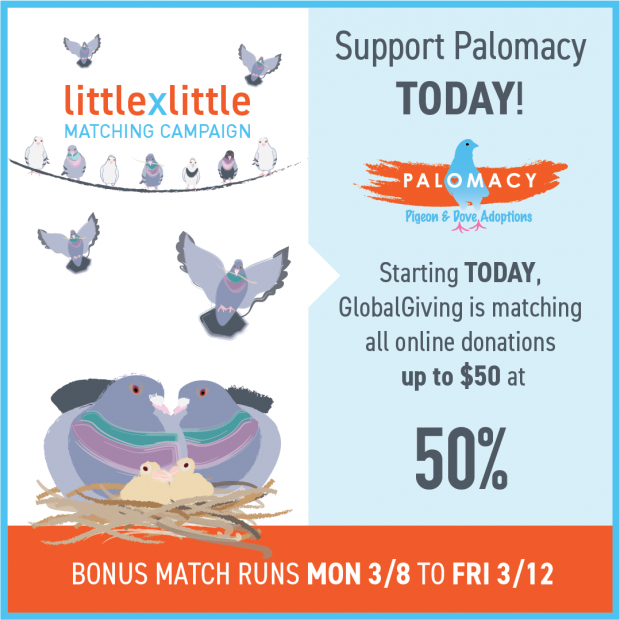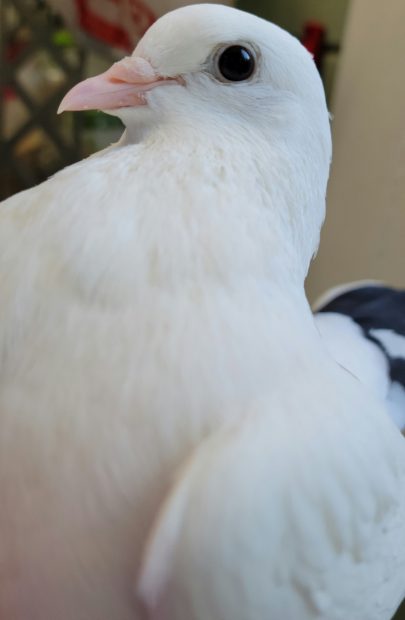
Moo
Rescued unreleasable pigeons like Moo depend on Palomacy for life-saving care and we depend on your donations to provide it. One surgery costs on average $2000. One month of Palomacy’s rescuing and rehoming costs $18,000. This Wednesday 7/14, starting early in the morning at 6 AM PT, donations of $100 – $1000 made to Palomacy will earn much needed bonus match funds until they run out. Please- donate!
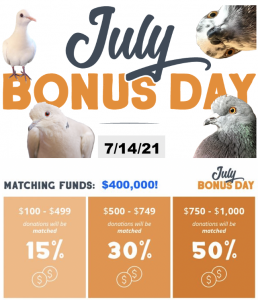
Moo and her mate Cooper were among a whole flock of pet pigeons displaced when their person’s rental home was sold. Palomacy flexed and stretched and together, in partnership with Great Lakes Pigeon Rescue, we were able to take them all in to foster care in April 2021.
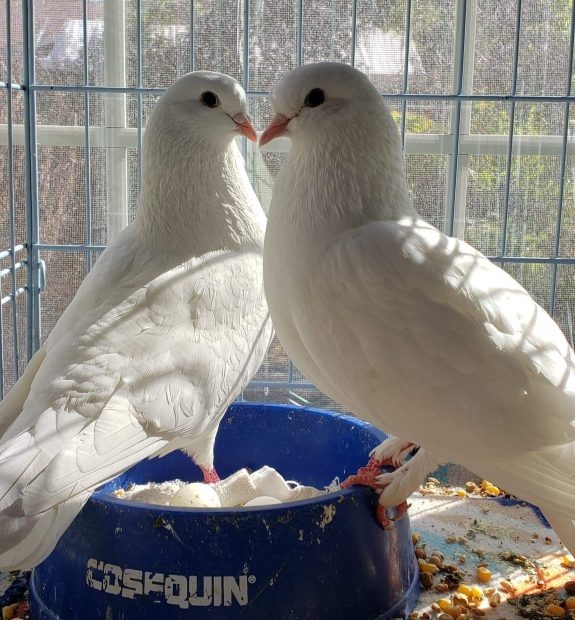
Cooper & Moo
Fosters Chris and Gary instantly fell in love with the sweet couple and they were doing great until, near the end of June, Moo stopped eating and started hunching over in pain.
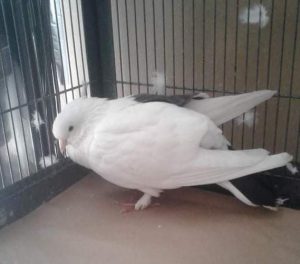
Moo hunched in pain
Chris rushed her to our Care Coordinator Jill who immediately got her seen at Medical Center for Birds. The diagnosis was worrying. Ultrasound showed a big mass in her abdomen, likely reproductive disease-related, possibly cancerous and, if it was, prognosis was poor.
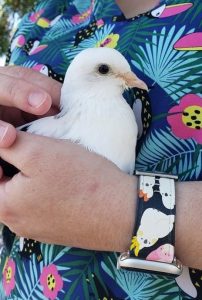
Moo cradled in Dr. Baden’s loving arms
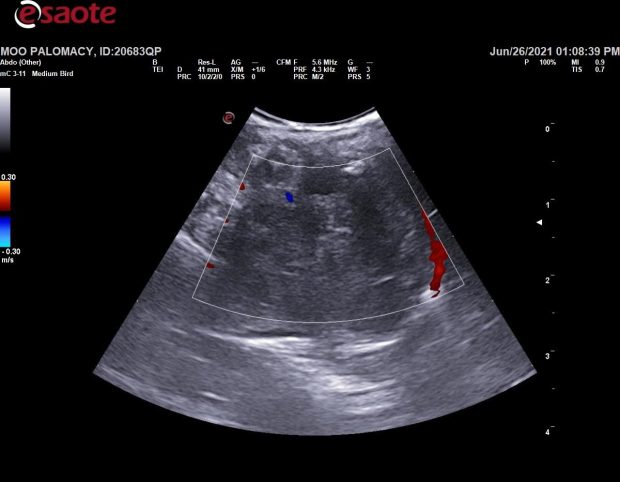
Moo’s ultrasound- the red & blue markers suggest the mass may have blood flow (potentially indicating cancer)
Moo was too weak for surgery to even be considered so she went back foster home with Jill for supportive care and pain management while we figured out what to do.
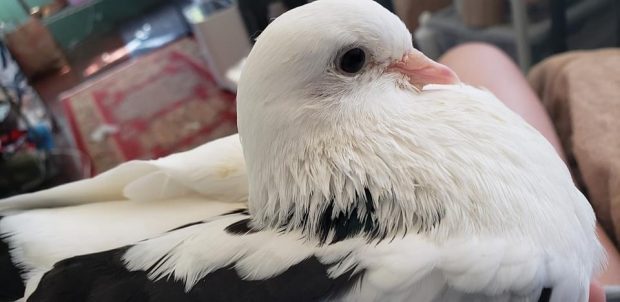
Jill carefully nursed Moo along with small, frequent, gavage fed meals of nutrition-rich Emeraid, supplemental heat, pain meds and lots of encouragement. Moo got a little stronger but she was suffering. Jill felt strongly that, despite the low odds and high expense, we needed to give Moo a chance with surgery. She might have inoperable cancer for which she’d be euthanized on the table or she might die from the strain of surgery or she might be saved. We wouldn’t know until we knew. Moo had surgery on July 1st.
When Dr. Baden called Jill that afternoon with the post-surgery update, she asked, Do you want the good news or the good news? Moo woke up after surgery and it wasn’t cancer! Both good news! Moo had a severely impacted oviduct (through which she was inexplicably able to pass a normal egg on 6/17) which was removed. She had had a successful salpingectomy. (Graphic photo of the removed oviduct and impacted material is posted way down a few inches after the end of this post, if you want to see.)
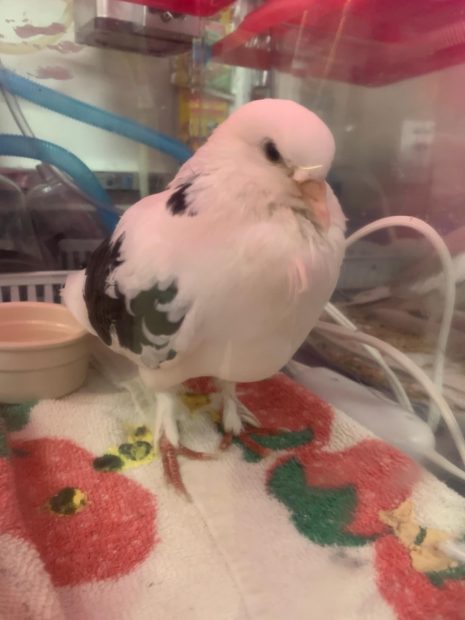
Moo recovering after surgery
Her no longer smooshed intestines resumed working and she began to improve immediately. Tiny little Moo is doing great now! While she’ll no longer lay eggs, we are cautiously optomistic that she can still live a good life nest building and sitting on fake eggs with her mate.
And that was the plan- to reunite her with husbird Cooper, patiently waiting at their fosters’, when she was healed up. But Moo, only eight days after surgery, surprised us by giving her heart to sweet, lonesome Apollo, another special needs bird fostered in Jill’s bird room, the day before he was to be transferred to his new foster home.
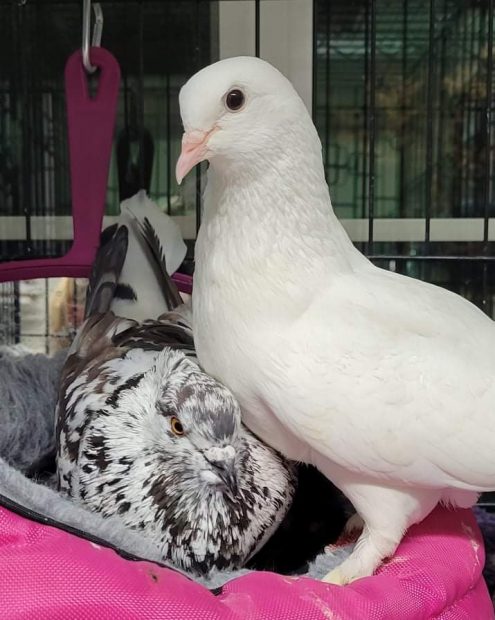
Love is… newlyweds Apollo & Moo
They are so happy to be together that we can’t bring ourselves to interfere. But don’t worry- Cooper is already signed up for pHarmony and is flirting hard with an androgynous Fantail named Dulce.
Together, this is what we do. We combine everything we have, all of our knowledge and empathy and money and time and hope and tears, to catch these incredible little birds from falling, to save them when they need help.
Thank you for helping! Please donate if you can.
Scroll down for graphic photo showing the impacted oviduct surgically removed from Moo.
Keep scrolling if you want to see, stop here if you don’t…
Warning: Graphic photo below
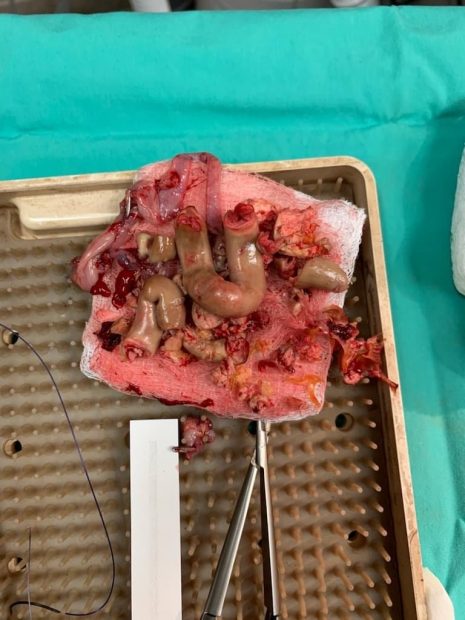
Impacted oviduct surgically removed from Moo


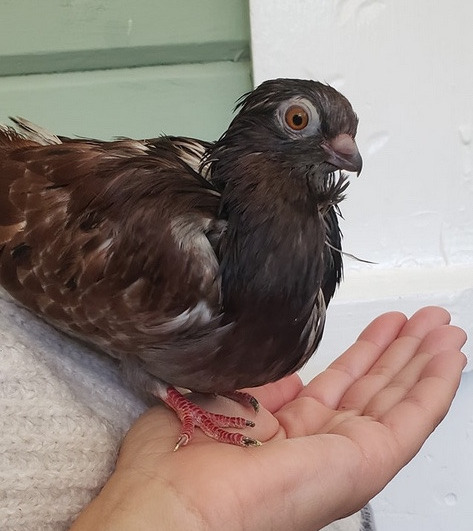
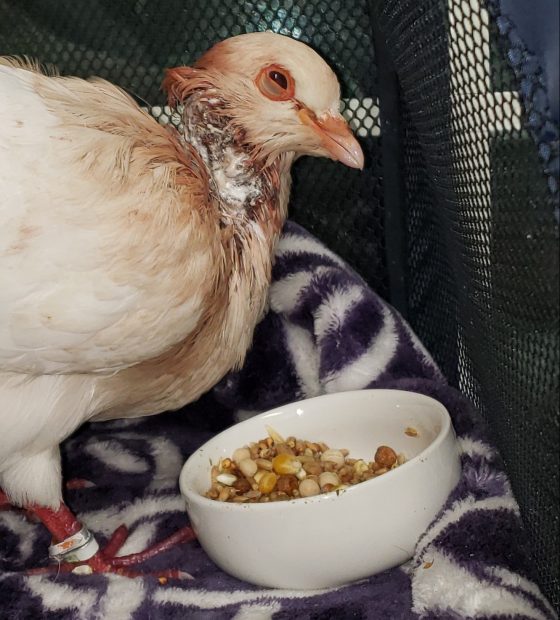
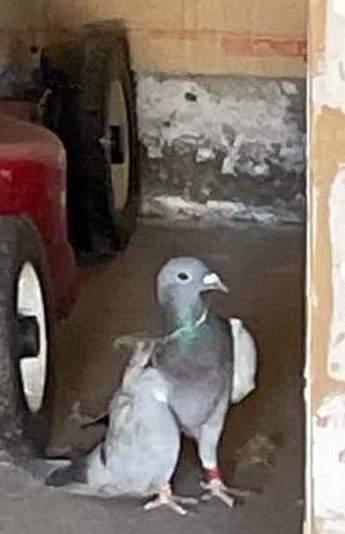
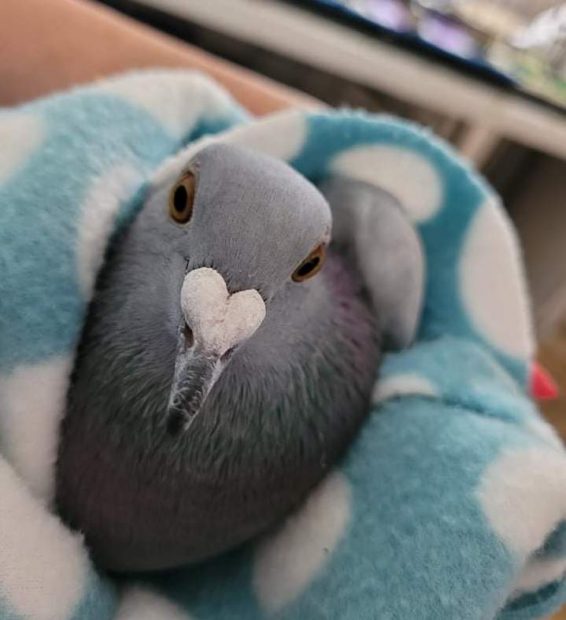
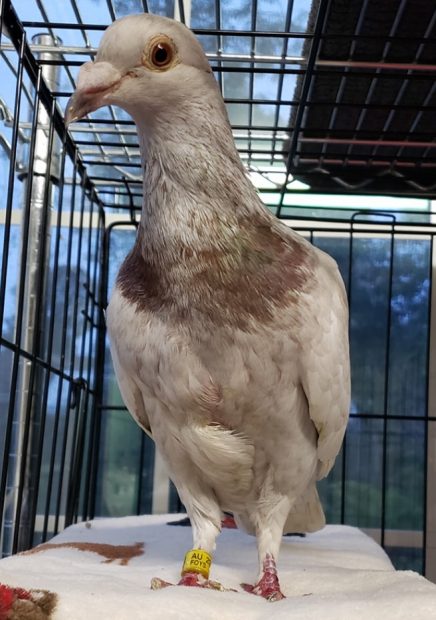
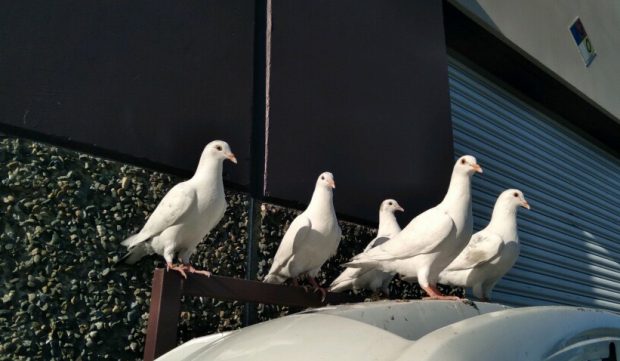
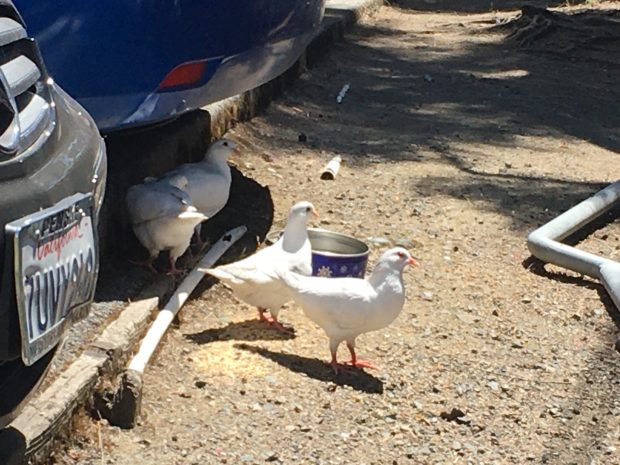
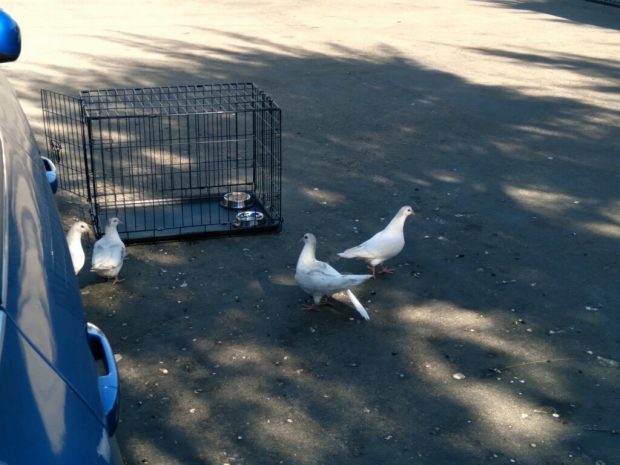
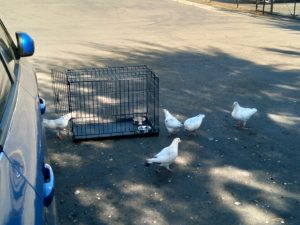
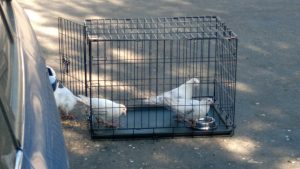
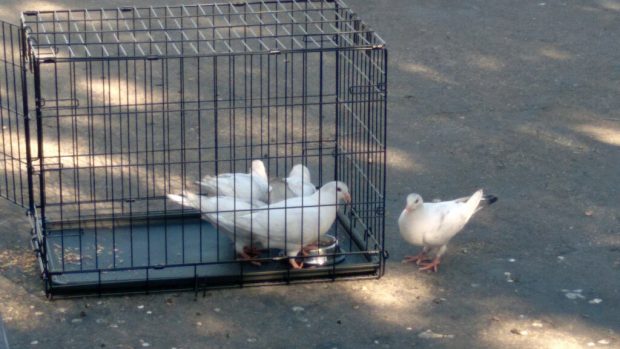
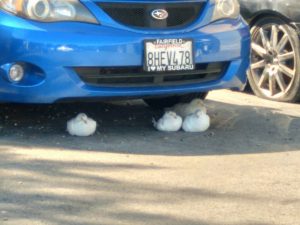
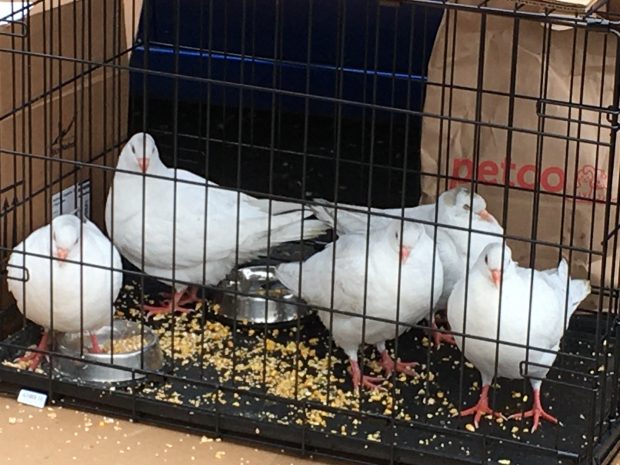

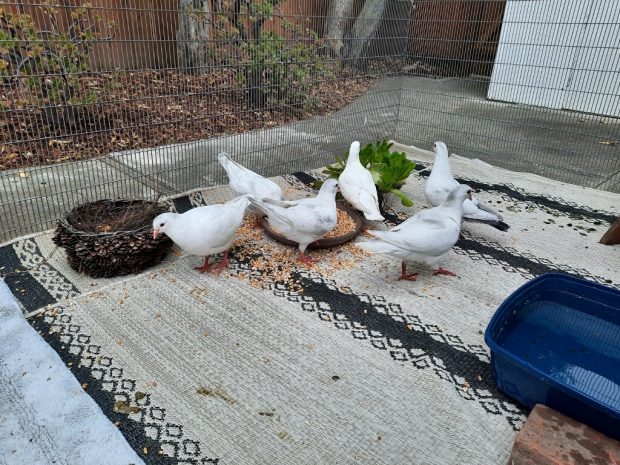
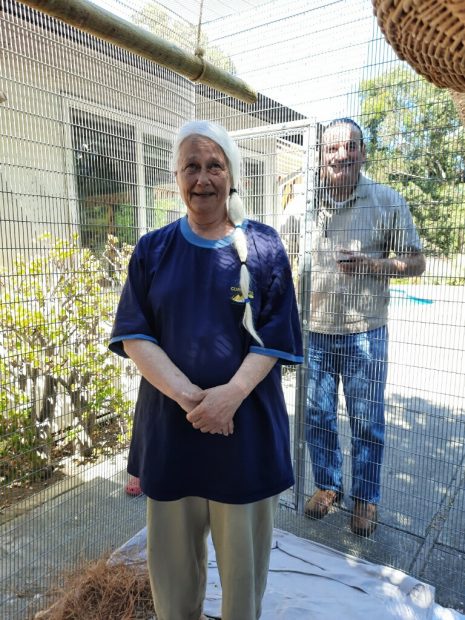
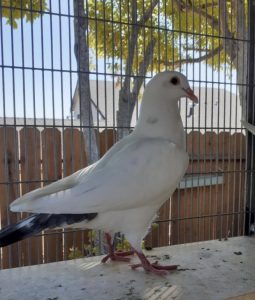
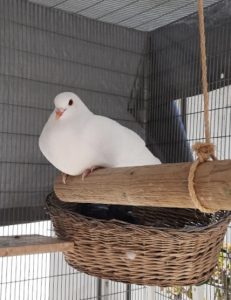
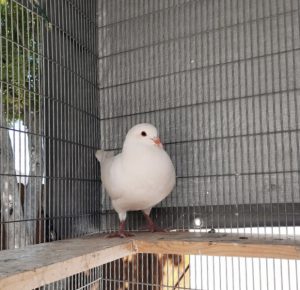
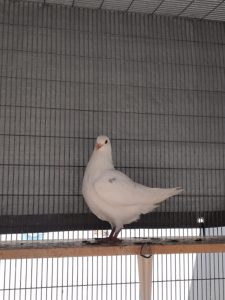
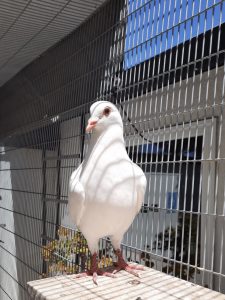
 Andrea writes: Andrea Crebassa is older than the hills…OK, not quite that old. She is one of 9 children. Her husband owns
Andrea writes: Andrea Crebassa is older than the hills…OK, not quite that old. She is one of 9 children. Her husband owns 
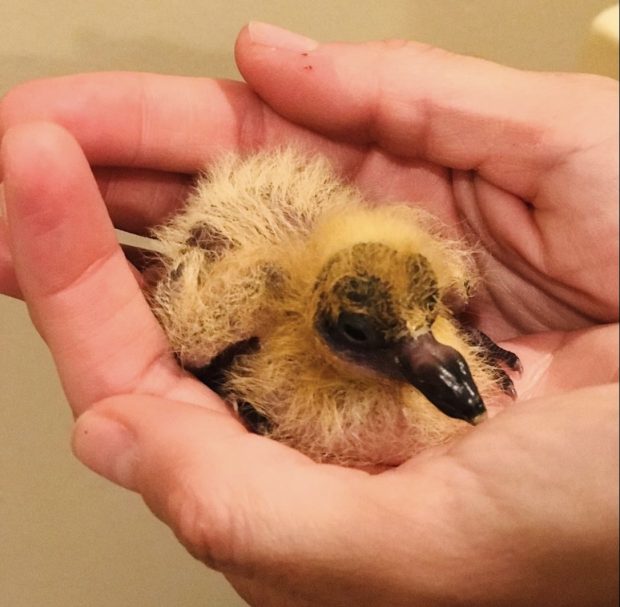
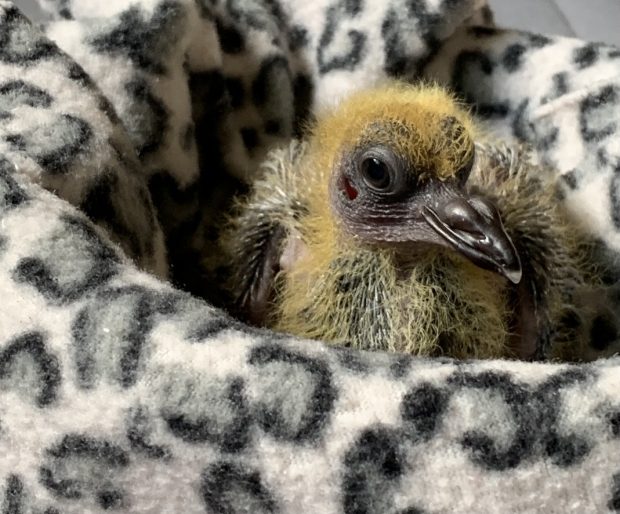
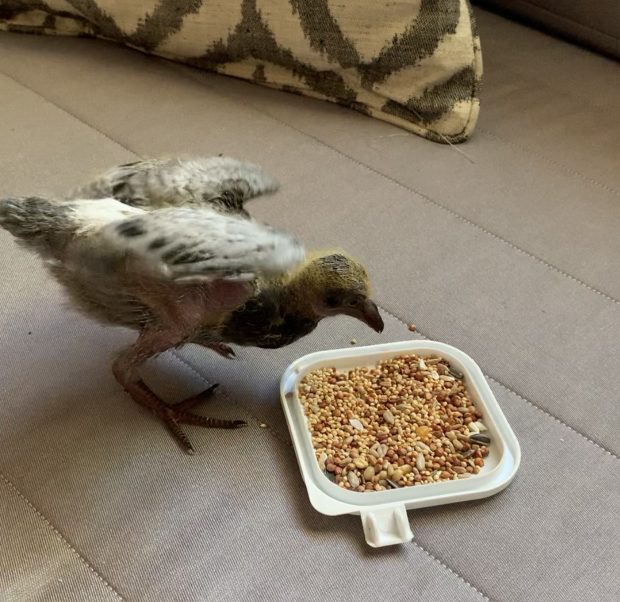
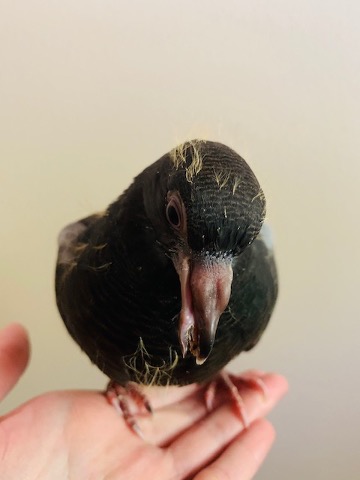
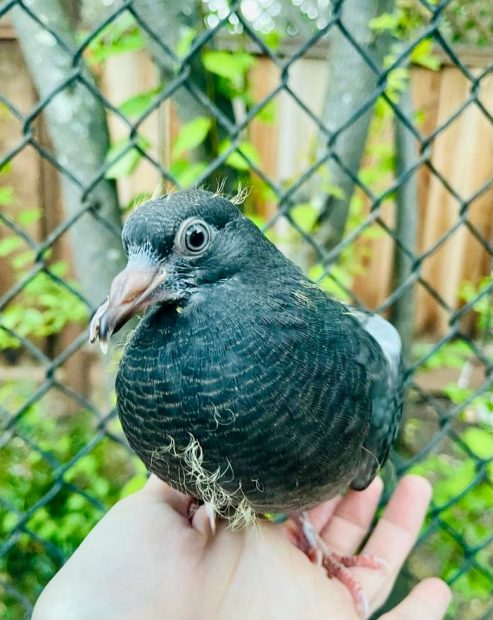
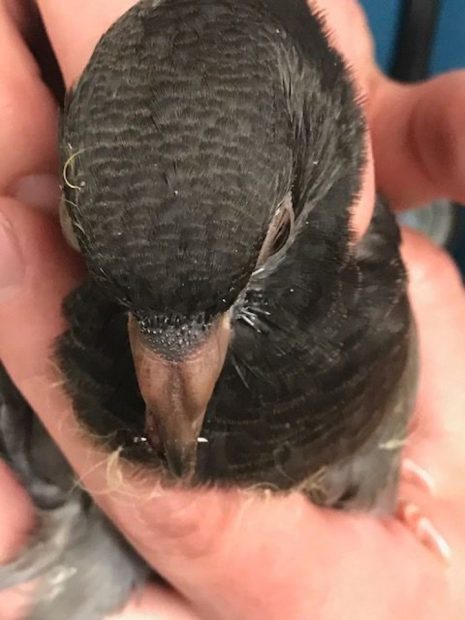
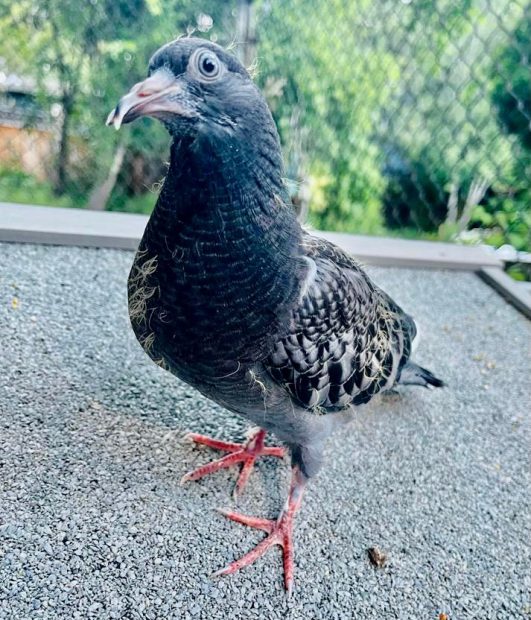

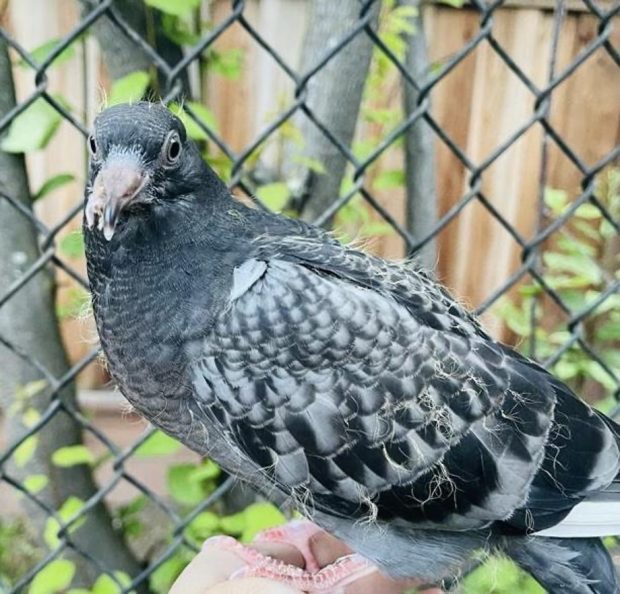
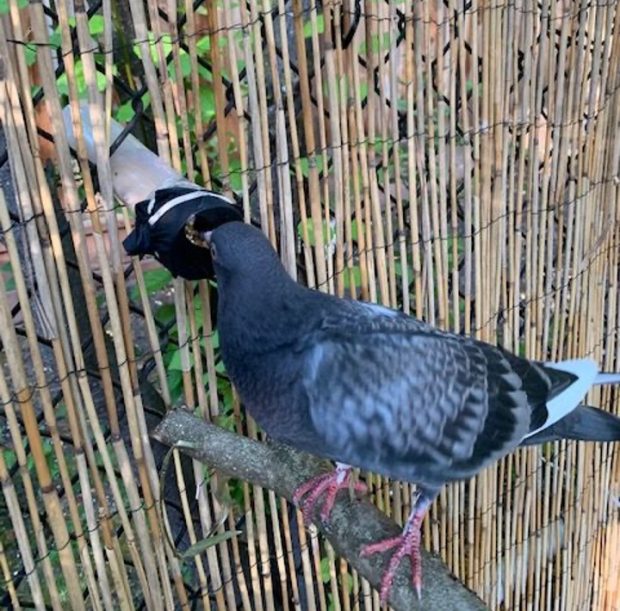
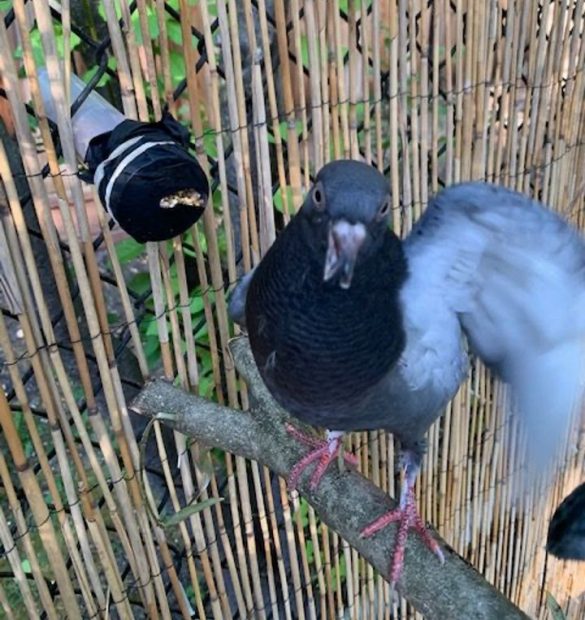
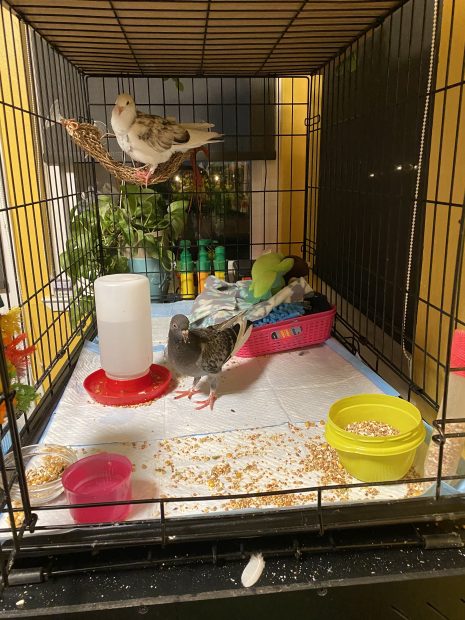
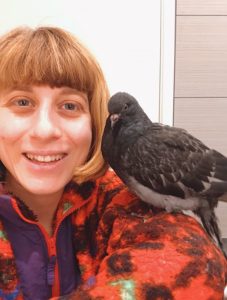 Seyma
Seyma